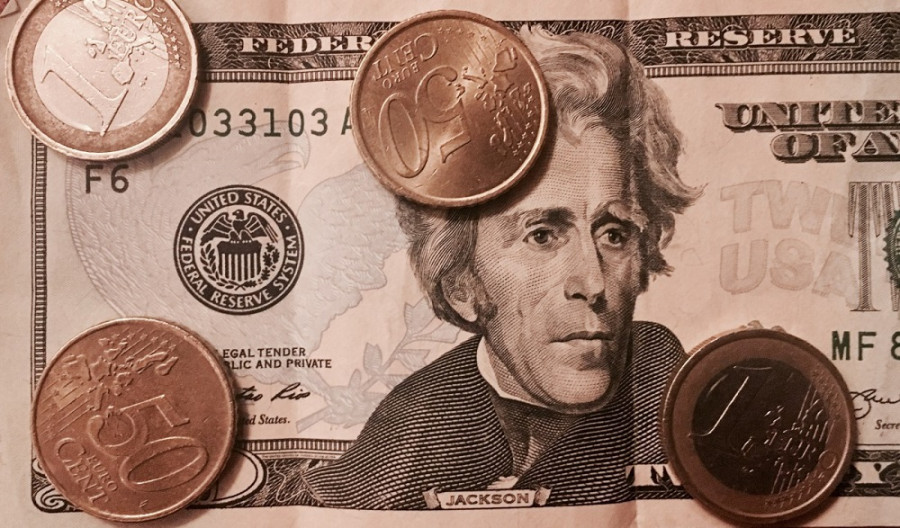
Buyers and sellers of the EUR/USD pair are locked in a stalemate. The past trading week ended at the opening level, with only a three-point deviation, which reflects how indecisive and persistent both sides are. Bulls failed to push the pair into the 1.10 range, and bears failed to settle below the 1.0900 target. The conditional parity is driven by the contradictory fundamental backdrop.

Factors that support the euro include the increase in eurozone inflation, as well as growth in key inflation indicators in Germany. And it seems that this trend will continue, as EU governments have started to phase out generous subsidies that were paid to the population to support them during the energy crisis of 2022. Therefore, it is inevitable for inflation to rise in the coming months. At the same time, the core Consumer Price Index continues to show a downward trend, slowing down to 3.4% in December.
Nevertheless, despite some components of the inflation report being in the "red" (the CPI fell short of the projected 3.0%, coming in at 2.9% instead), and the core index dropping again, the general picture, in my opinion, works in favor of the single currency. At the very least, the hawks of the European Central Bank have supporting arguments to keep interest rates at their current level at least until June.
The fundamental picture for the greenback is also contradictory. On one hand, the December Non-Farm Payrolls report was in the "green": the unemployment rate remained at 3.7% (against forecasts of 3.9%), and the number of employed people increased by 216,000 (against a forecast of 160,000). The average hourly wage also increased by 4.1% (with a forecast of a decrease to 3.9%).
But there are nuances here as well! First of all, the employment figures for November and October were revised lower. Secondly, the worrisome trends were reflected in the ISM US Services PMI index, which was also published on Friday. The employment index sharply dropped to 43.3 points in December, whereas this indicator was at 50.7 back in November.
Against the backdrop of such a contradictory fundamental picture, EUR/USD traders could not determine the price movement vector and returned to the starting point.
A powerful impetus is necessary in order to tip the scales in one direction or another. In this regard, reports on US inflation, which will be published in the coming week, could play a key role.
The main focus will be on the CPI, scheduled for release on Thursday, January 11. According to preliminary forecasts, the CPI will accelerate slightly: on a monthly basis - to 0.2% (in November, it increased to 0.1%), and on an annual basis - to 3.2% (November - 3.1%). However, the core CPI, excluding energy and food prices, is expected to decrease - to 0.2% on a monthly basis. In annual terms, the core CPI is expected to drop below the 4% mark for the first time since May 2021, reaching a target of 3.8%.
If both components of this report come out in the "red," the dollar will come under strong pressure. It is worth noting that after the release of December Non-Farms, the probability of a rate cut at the March meeting decreased to 62% (it was 75% before the release), according to the CME FedWatch Tool. In fact, thanks to this, the dollar held its ground at the end of the past week. However, if US inflation slows down in December, dovish expectations will rise again, and the bulls might be more aggressive.
On Friday, the day after the CPI is published, another inflation indicator will be released. The Producer Price Index. According to forecasts, a similar picture will emerge here: the overall index may show accelerated growth (to 1.3% YoY from the previous reading of 0.9%), and the core PPI will set a multi-month low, dropping to 1.9% (the lowest level since December 2020).
Once again, if this release also has a "red tint," the dollar will come under additional pressure.
However, inflation data is not the only factor that will set the tone for EUR/USD trading. In the coming days, several Federal Reserve officials will speak, who may comment on the December Non-Farms. For instance, on Monday, the head of the Atlanta Fed, Raphael Bostic, is expected to speak, on Tuesday, Deputy Fed Chairman Michael Barr will speak, on Wednesday, the head of the New York Fed, John Williams, will speak, and on Friday, the head of the Minneapolis Fed, Neel Kashkari, will speak.
Thus, the upcoming week promises to be "hot." Fed remarks and, most importantly, inflation reports will determine the direction of EUR/USD. If Fed officials tighten their rhetoric (casting doubt on the need for a near-term rate cut), and key reports (CPI, Core CPI) come out in the "green," the bears will take the initiative and pull the pair towards the 1.08 handle (the main target being the upper band of the Kumo cloud on the daily chart, which corresponds to the 1.0850 level).
In all other scenarios (i.e., if the Fed maintains a cautious tone and inflation reports come out either in line with expectations or in the "red"), the bulls will try to conquer the 1.10 level again. In this case, the nearest target for the upward movement will be the 1.1010 level (the Tenkan-sen line on the daily chart). If the bulls surpass this target, they will work their way to their main goal at 1.1100 (the upper Bollinger Bands line on the same timeframe).